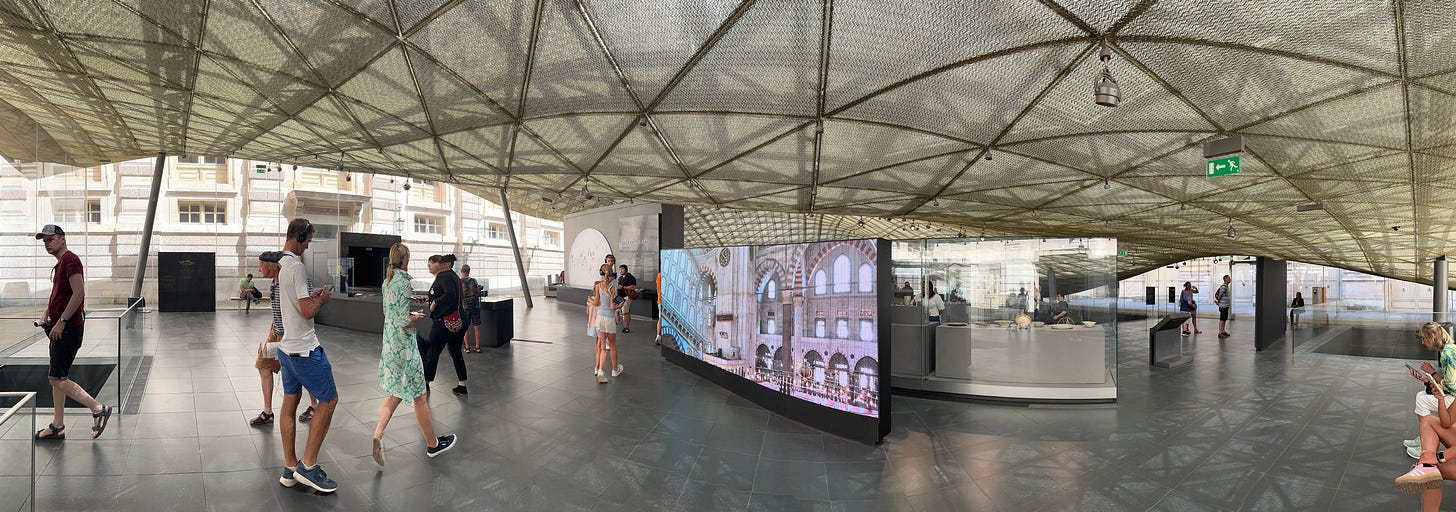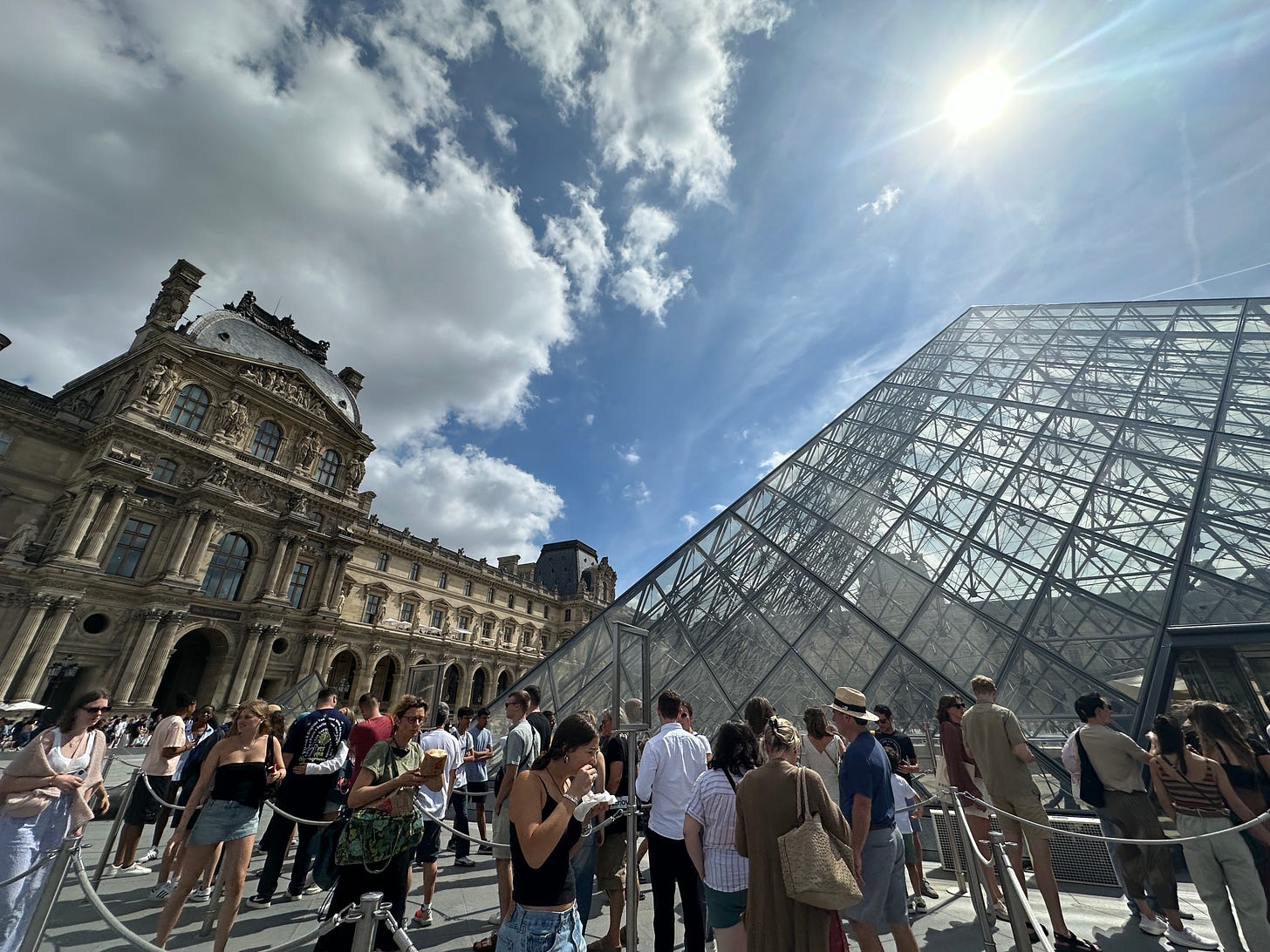
Venus sends Cupid down, and soon, the god of love himself falls in love. She’s a mere mortal though, so, like no-gos we may have experienced in relationships, this was a deal breaker. They manage in secrecy for a while until one night, she makes a faux pas by getting a glimpse of Cupid (which this 1812 painting portrays). Then, the plot thickens when Venus sends the damsel down into the underworld to fetch an elixir which leaves her unconscious from the fumes. Cupid rushes to her and, yes folks, revives her with just his kiss. Canova’s 1793 marble statue at the Louvre cements the moment of resuscitation and in this myth, God lets the lovers unite by changing the rules. Transforming her from a human into the goddess of the mind, Psyche attains the status of a god and lives happily ever after with Cupid …
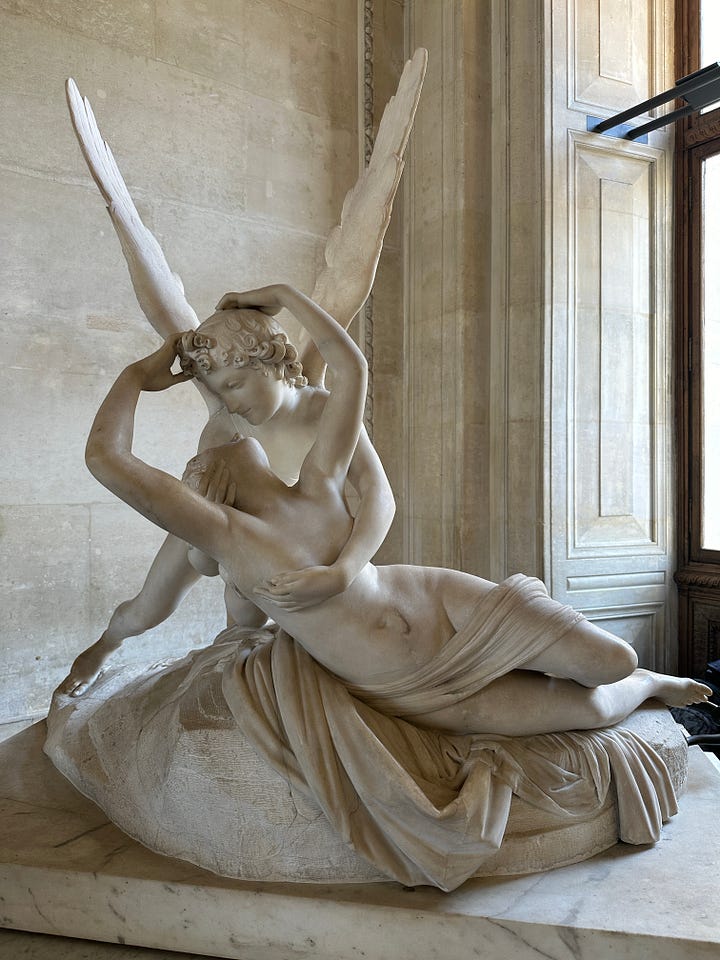
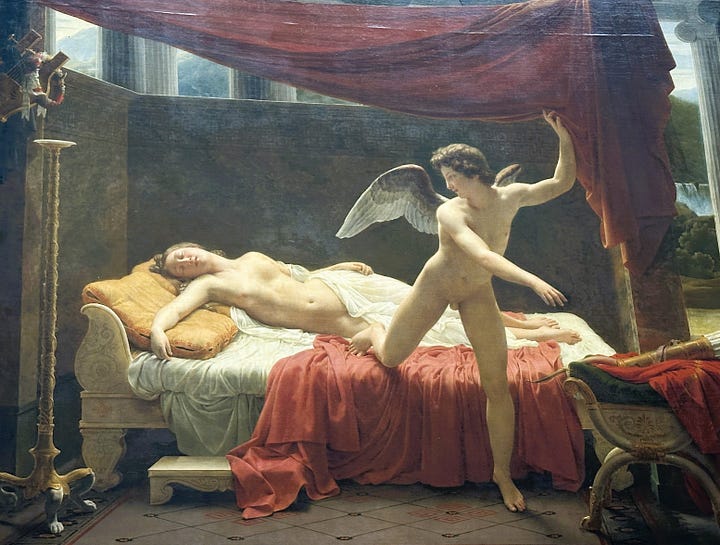
I thought about the love lives we may have lived with colourful crescendos, denouements and downfalls and wondered what scene we’d pick to have captured for others to see up on display, centuries from now.
I hung out at that statue for a long while, at first, not even knowing the back story I was staring at. How fascinating it is when something holds our attention unexpectedly. To take an amorphous block and to shape story and life into it is a skill I appreciate as much as the carte blanche of a painting that evolves into a rendering of another realm. From housing 537 paintings when it first opened in 1793 to the ~500,000 works now in France or abroad, the Louvre displays approximately 35,000 works of art at any given point, within its 73, 000 m2.
For hours, I wandered within the world’s largest museum, drinking in the diverse delicacies as I hit 10k steps. Even at 30 seconds a piece, it’d take 100 days to see it all!
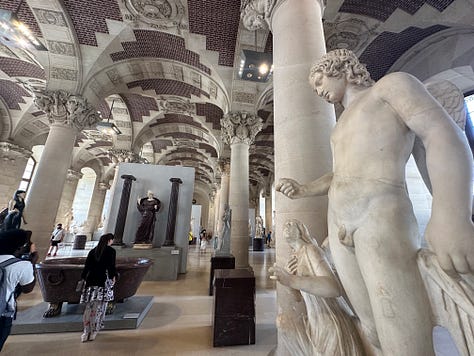
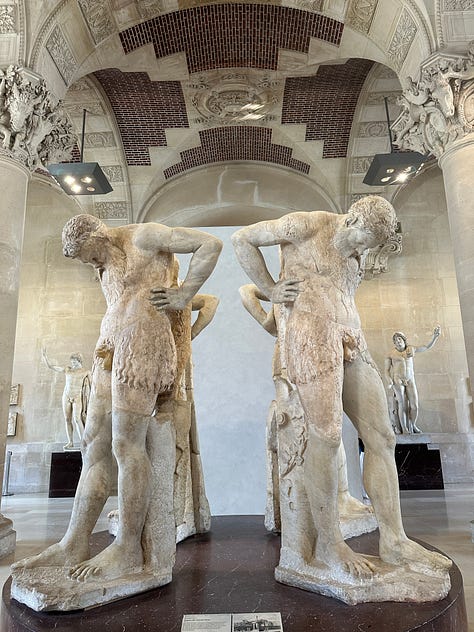
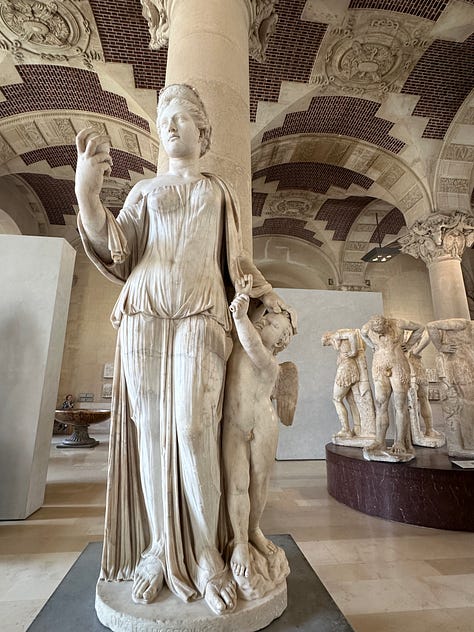
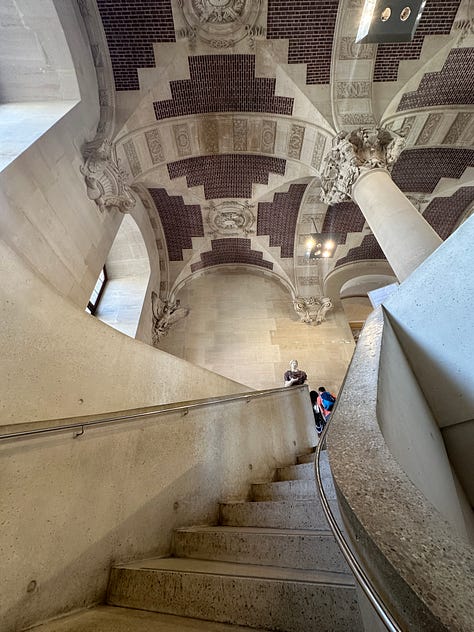
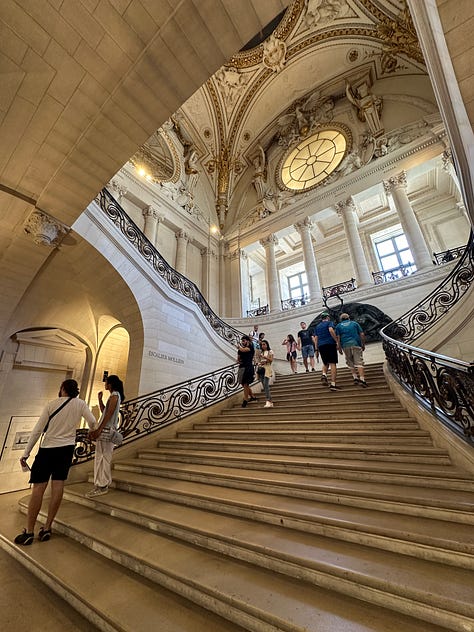
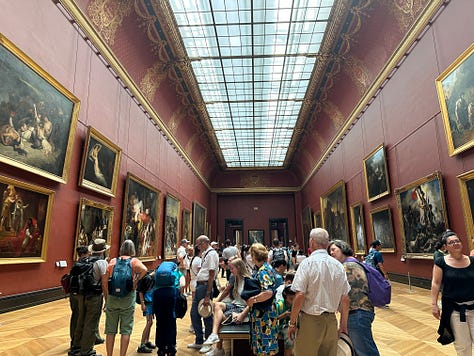
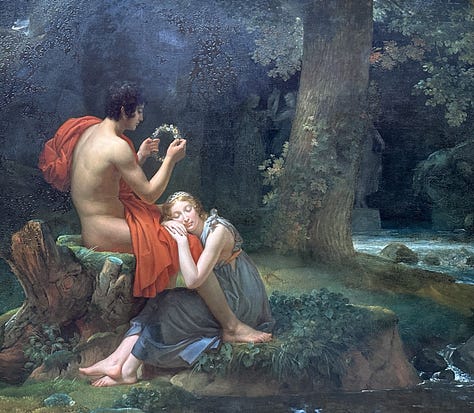


Like particular people that one may have an affinity for, there’s certain pieces of art we find ourselves intrigued by. Then, there’s the ones that have universal appeal - both the kind we also appreciate, and the ones that we’re still trying to see what all the fuss is about. Detouring off the route I’d planned, I veered towards the sculpture that pulled me in towards her like a magnet. From the folds on her robe, I saw precision in stone while feeling prosperity within the piece. She seemed struck by the elements, yet undeterred, gracious and confident as she alighted the ship. I examined her from various angles, unable to take my eyes, feet or attention elsewhere. Until I decided it was time to seek out one of the most visited statues … only to exemplify The Alchemist’s journey and find myself back at the Winged Victory of Samothrace, one of the rare Greek statues whose original location remains unknown. Discovered in 1863 by Charles Champoiseau, initially 110 fragments were found and restored. While the head and arms were not discovered even with later expeditions, parts of the ship, wings, ring finger and upturned palm were.
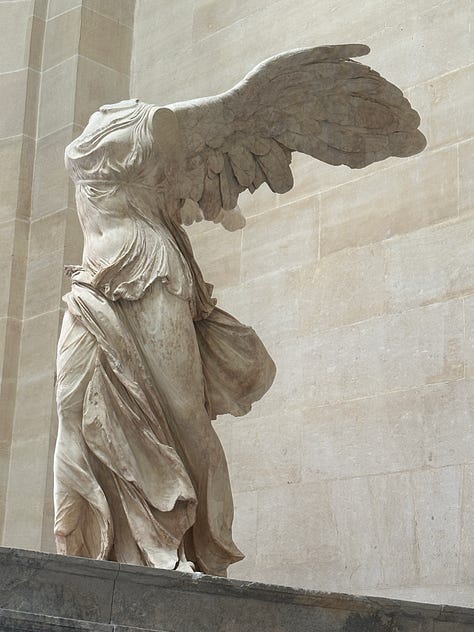

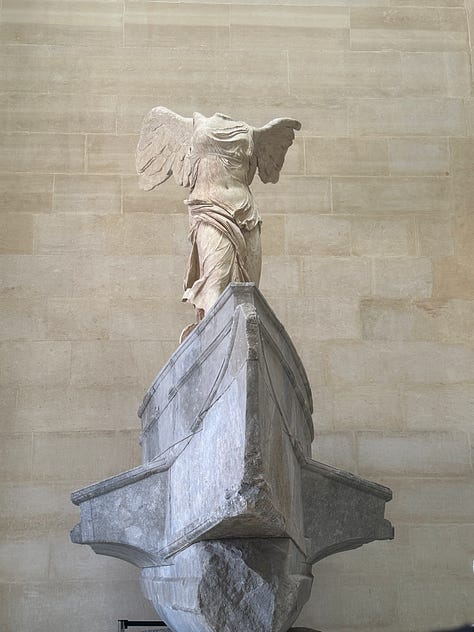
It’s said that Nike, the goddess of Victory, alights the ship just after a sea battle has been won. Commissioned likely in 190 BC as an offering to the gods to celebrate the win, the statue was moved with intention, to an emblematic place atop the Daru staircase within the Louvre in 1883.
This relocation came two decades after her arrival at the museum. The monumental stairs feature three levels leading in four different directions and, is one of six grand staircases within the Louvre. While the space seamlessly compliments the statue now, the original décor tailored for the goddess of Victory was actually critiqued for being too much, #OTT. I later learned that to sober the ‘music-hall star’ vibe, wallpaper imitating cut stones was added in 1934 to cover the heavily gilded mosaic - a move that further underscored how modern architecture meets Greek Hellenistic art.
Human talent continues to amaze me. Particularly when I see exquisite excellence from several cycles of seasons ago, it seems our species have a sundry of skills we specialize in. Imagine what we’ll be remembered for centuries from now … hopefully it’s net positive.
No trip to the Louvre would be complete without either a glance or gluttonous view of the Mona Lisa. Painted on a panel of poplar wood instead of canvas, to prevent further cracks, she is displayed in a temperature and humidity-controlled glass case. Seeing her and her throngs of global fans (some adorned in patriotic gear) were equally notable.
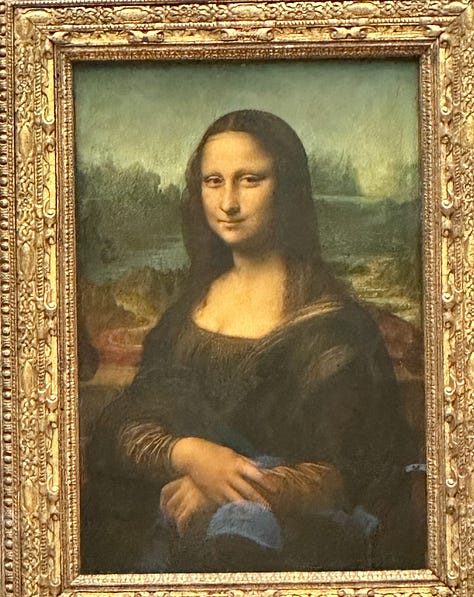
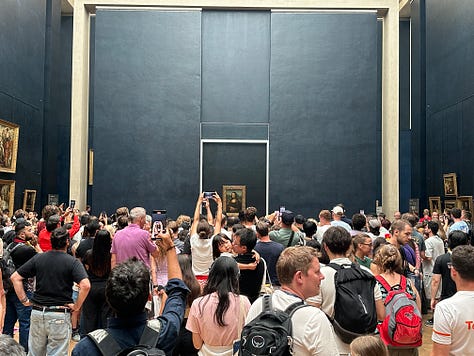
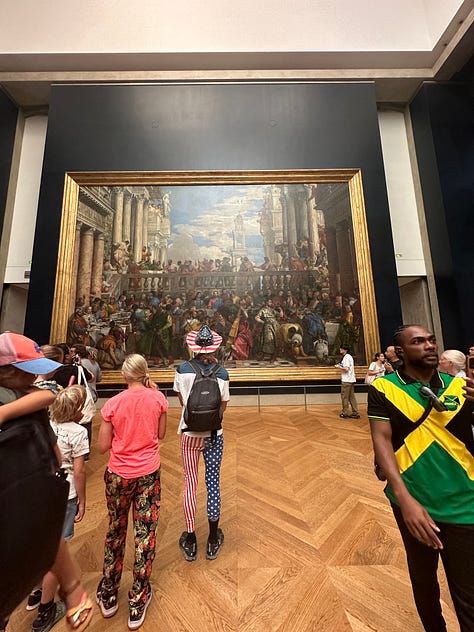
There were nods to niche areas such as the Galerie d’Apollon which houses the French Crown Jewels. Named after Apollo, the Greek god of the sun and the arts, Henri IV’s grandson set about to have the room reconstructed after the 1661 fire.
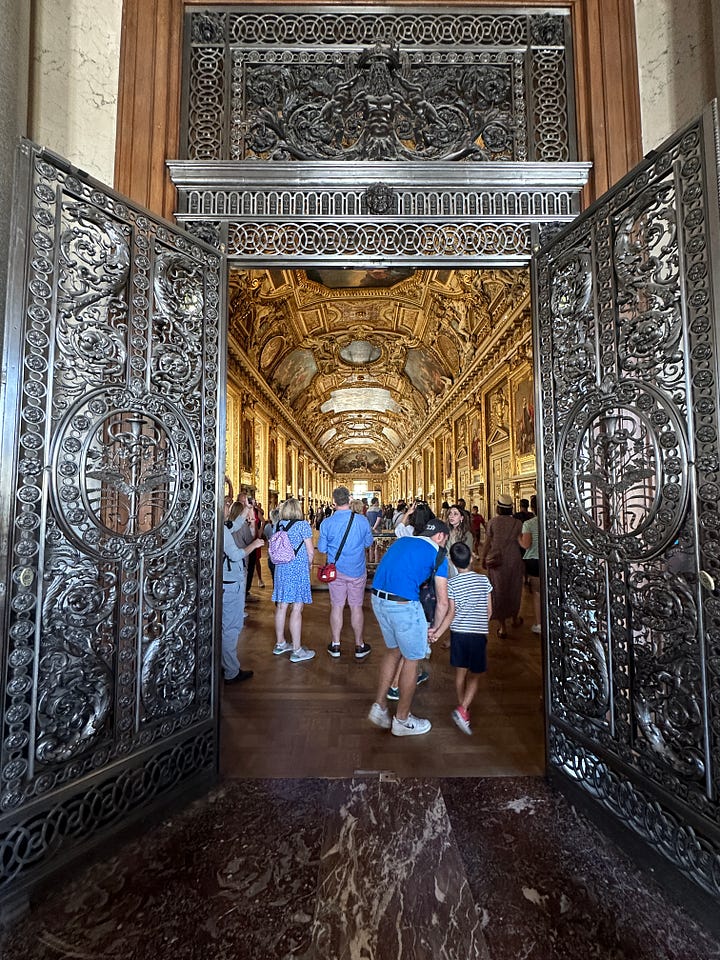
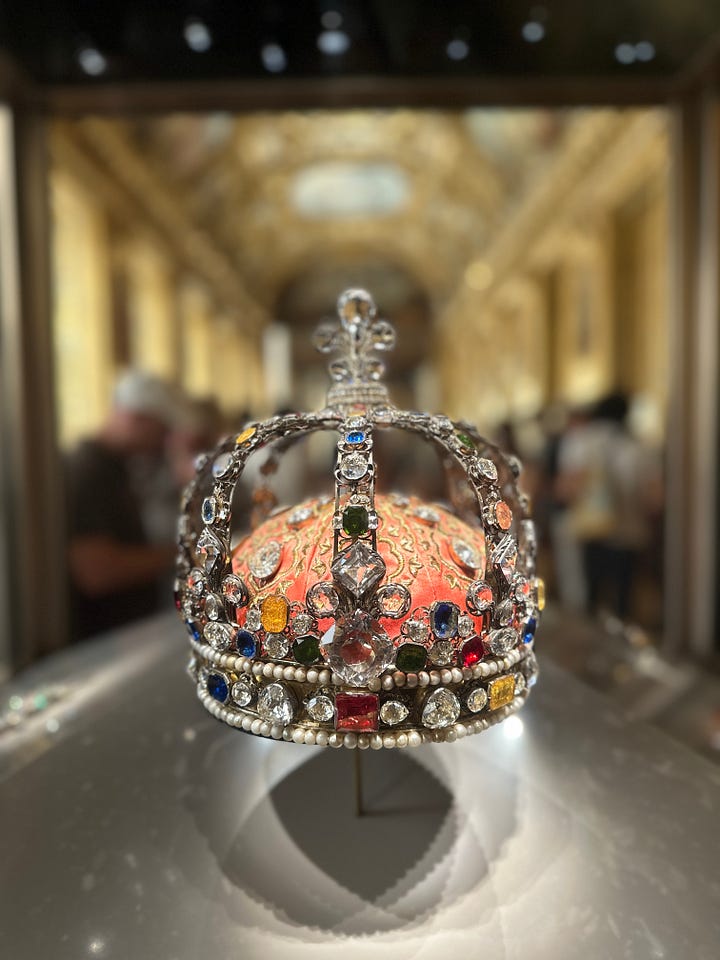
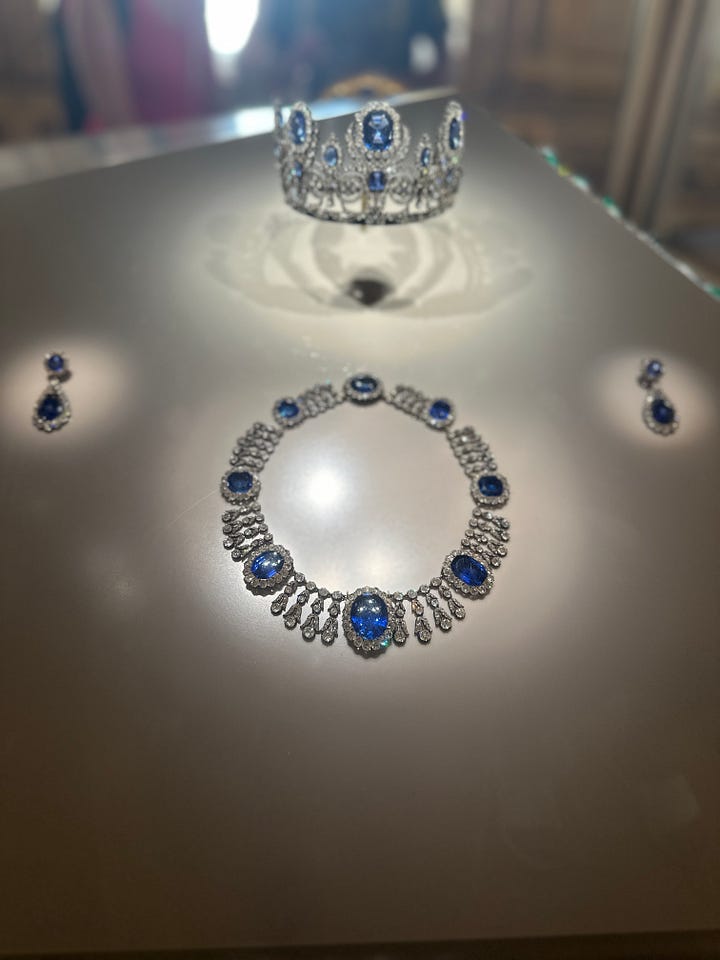
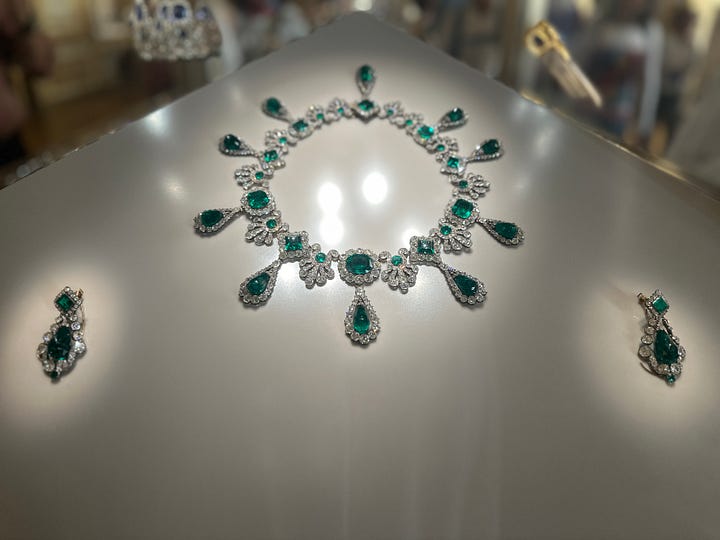
Since it’s not possible to properly peruse all the partitioned areas in one go, I picked a few I fancied and others that fell en route.
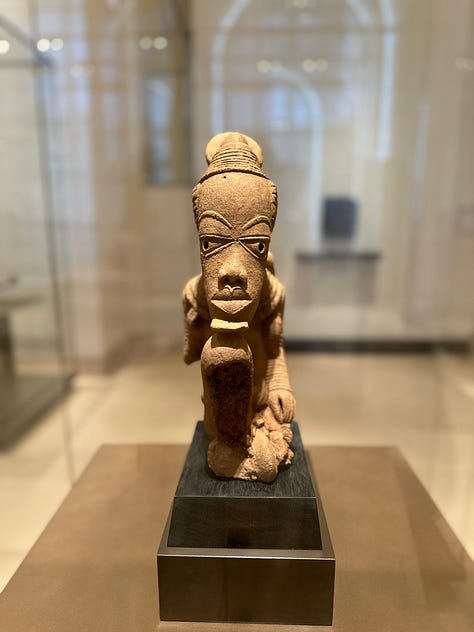
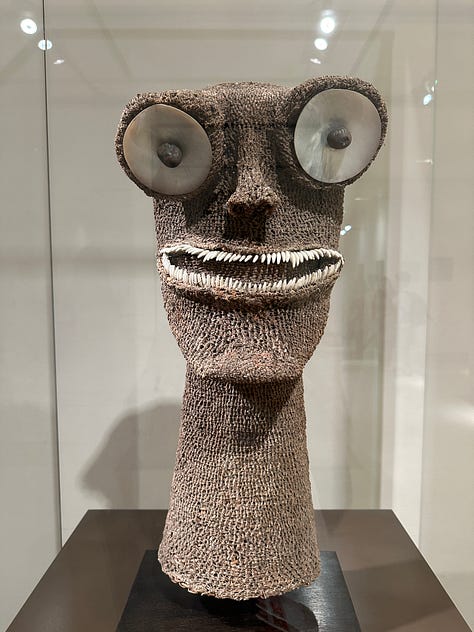
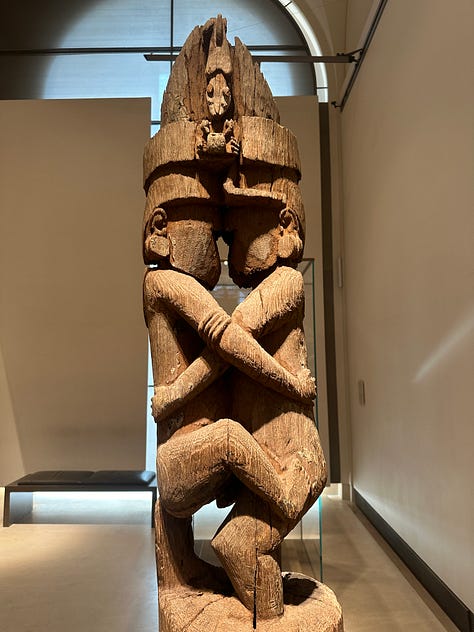
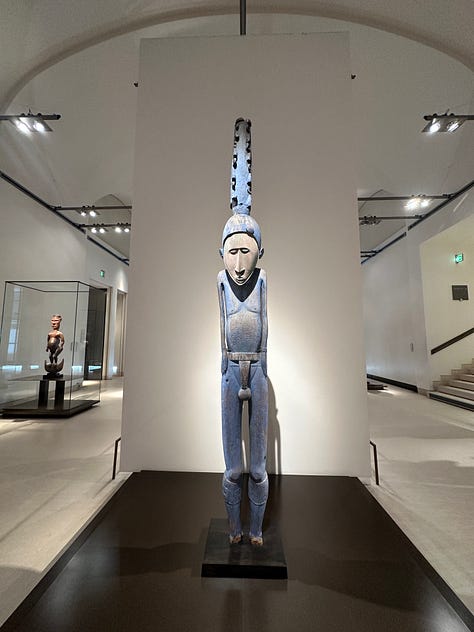

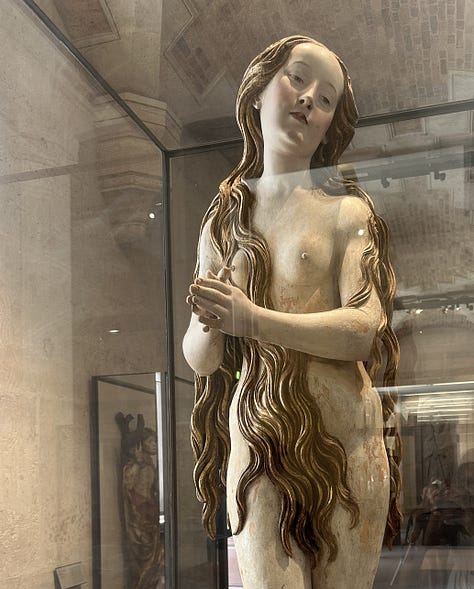
Every time I felt my feet say ‘time’s up’, my eyes pointed out another particular piece or place.
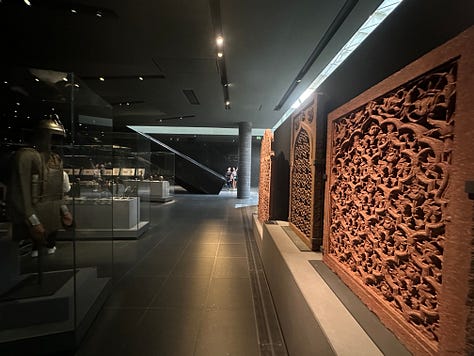
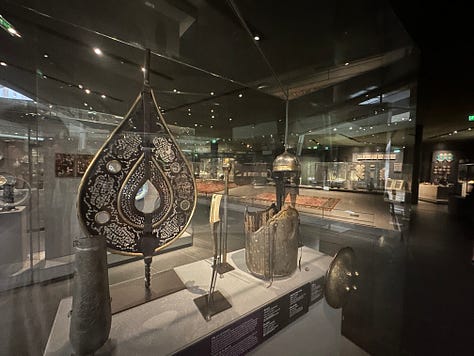
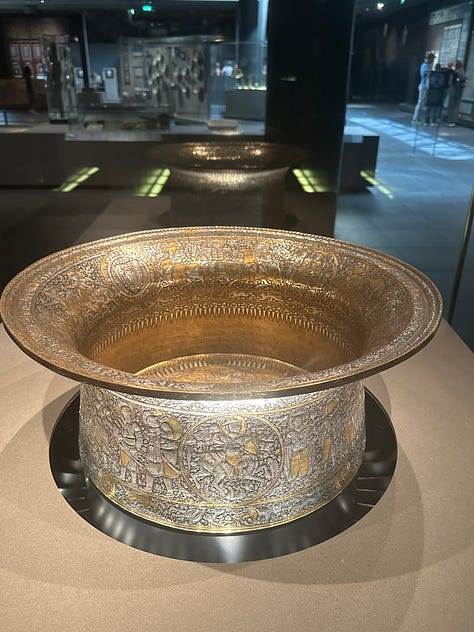
Then, I discovered the expansive atrium. Like that movie moment that hones in on the hero looking out at something so grand, my eyes and head rolled skyward in a slow, sweeping and super impressive motion. Around me, monuments were crystalized, not only by being clicked on smartphones, but also creatively captured.
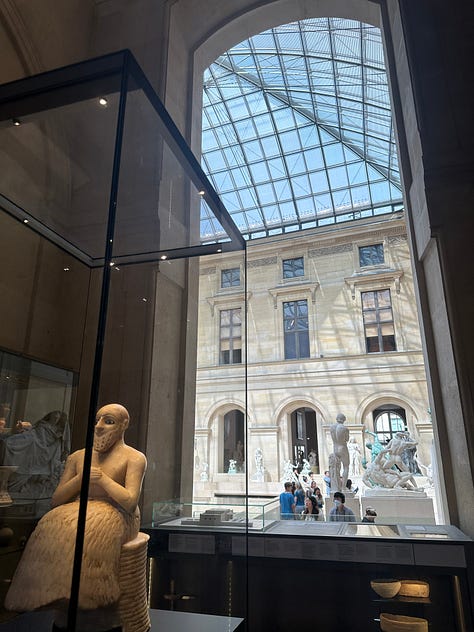
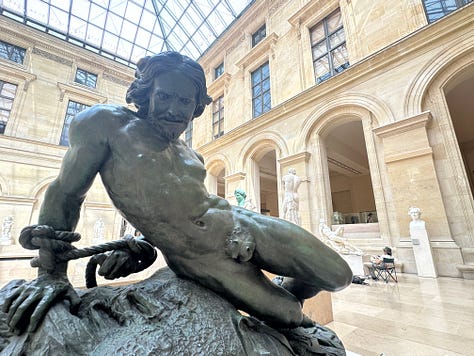
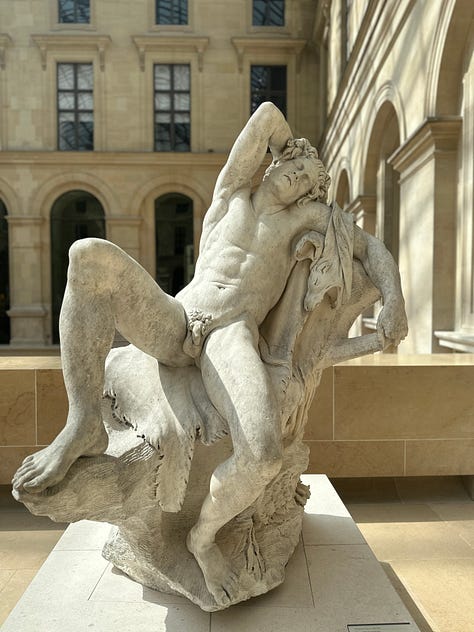
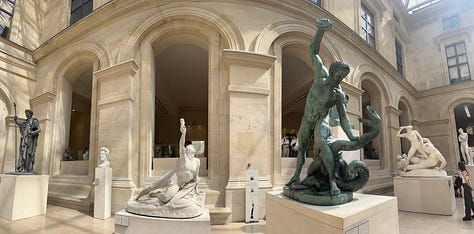
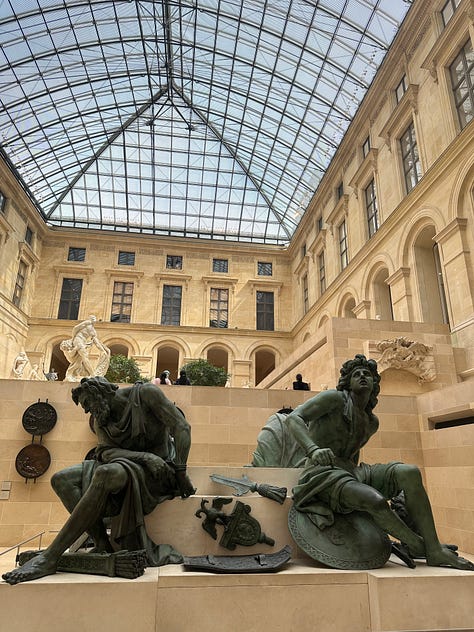
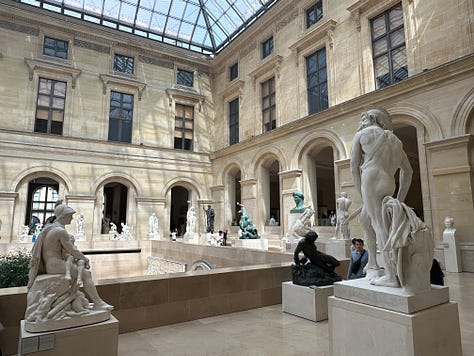
In this hall, the statue of Milo of Croton reminds me of the Olympic vibe and education in action. Frequently a medalist in the Olympics in the past, he is captured with a lion devouring his hand as he attempts to cut wood with it in his old age. From a meditation on human vanity here to Cupid and Psyche’s reminder of the lengths that we can go for love, the Louvre has countless creations that showcase and inspire reflection.
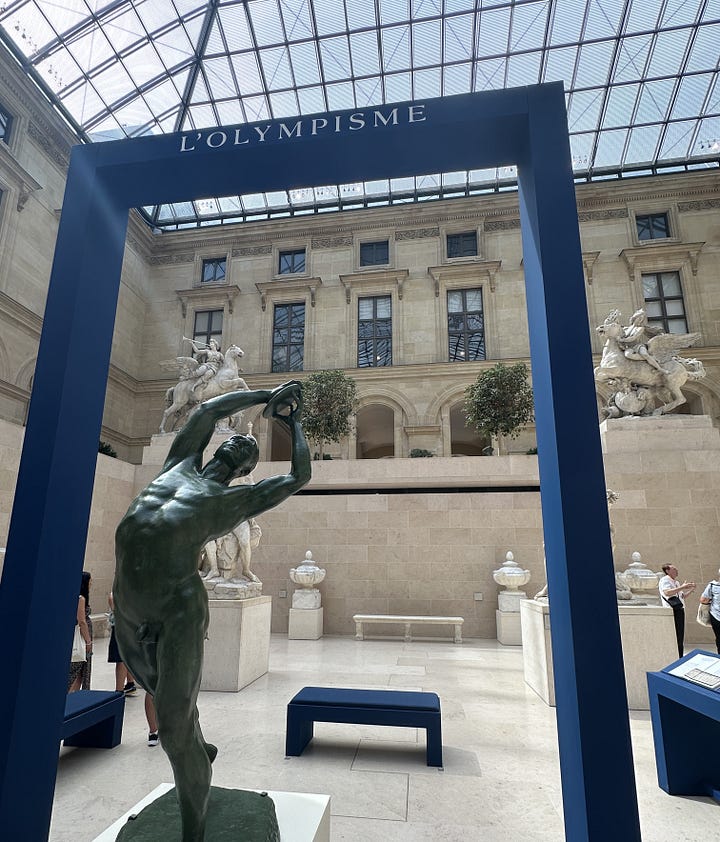
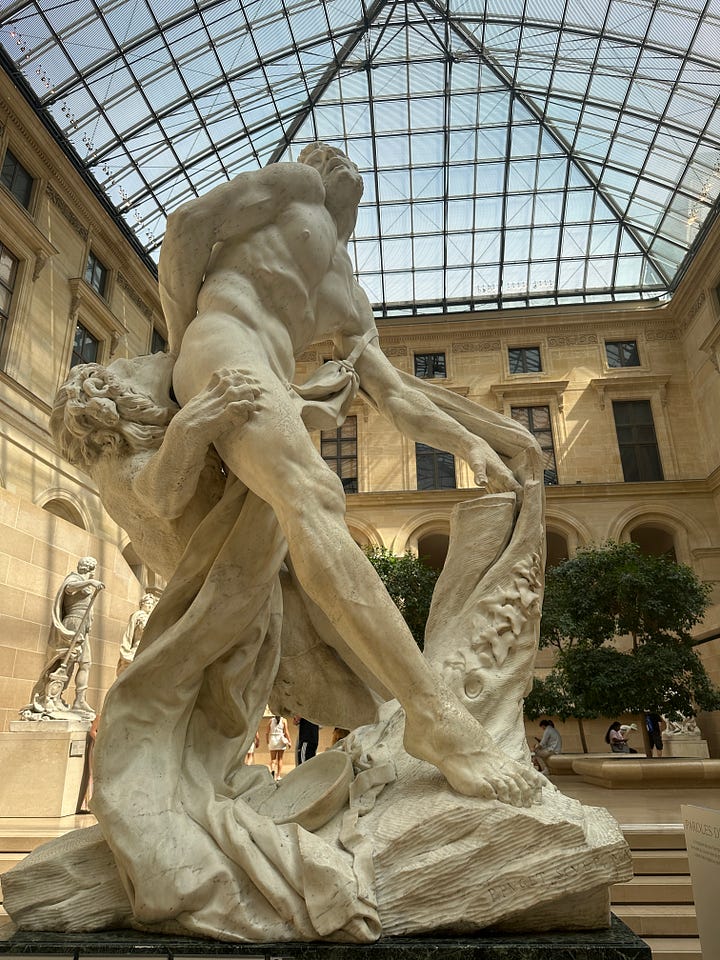
I strolled the stairwells, alcoves, rooms and halls reflecting on how privileged we are to have centuries of talent compiled for consumption. While there are measures in place to protect these assets from natural disasters, time chips away at us all. What talent would we want to outlive us?
Thankfully, the light that fed through the glass pyramid was still at a stage that made me squint when I stepped out. I ambled over to Jardin des Tuileries and soon saw some stunts in action. The manicured grassy lawns was like Life’s lab, letting us learn more about whatever our work was that day - from human connection to artistic creation.
Paris is a place that clearly values the arts. Not even in the ‘capital A’ kind of way, just in the simple dressing up of walls on the metro, busters block after block and in the art (and culture) of people watching.
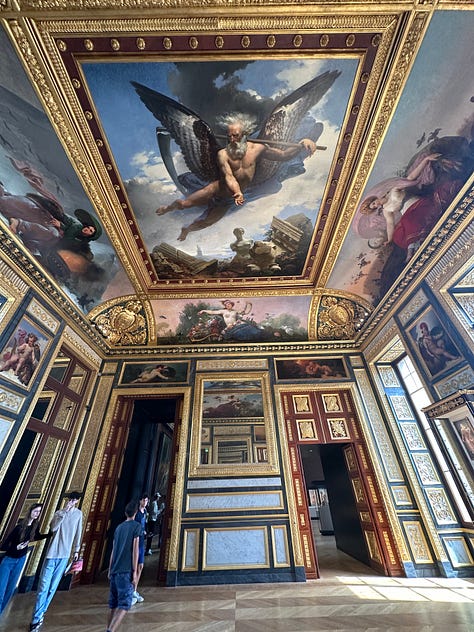
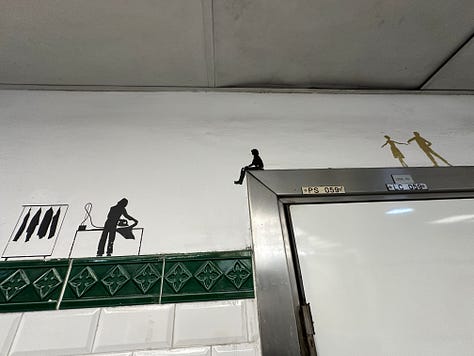

I’m in favour when our lands, creative hands and life’s stand provide a holographic palette for us to taste. This exposure and training of our palates to appreciate the plethora of perspectives is humanity’s prize. Art enables us to dig deeper into the issues we grapple with and the gems within our worlds. For the talent and gifts given to us by artists today, tomorrow and those that have transitioned, I’m gratefully glued.
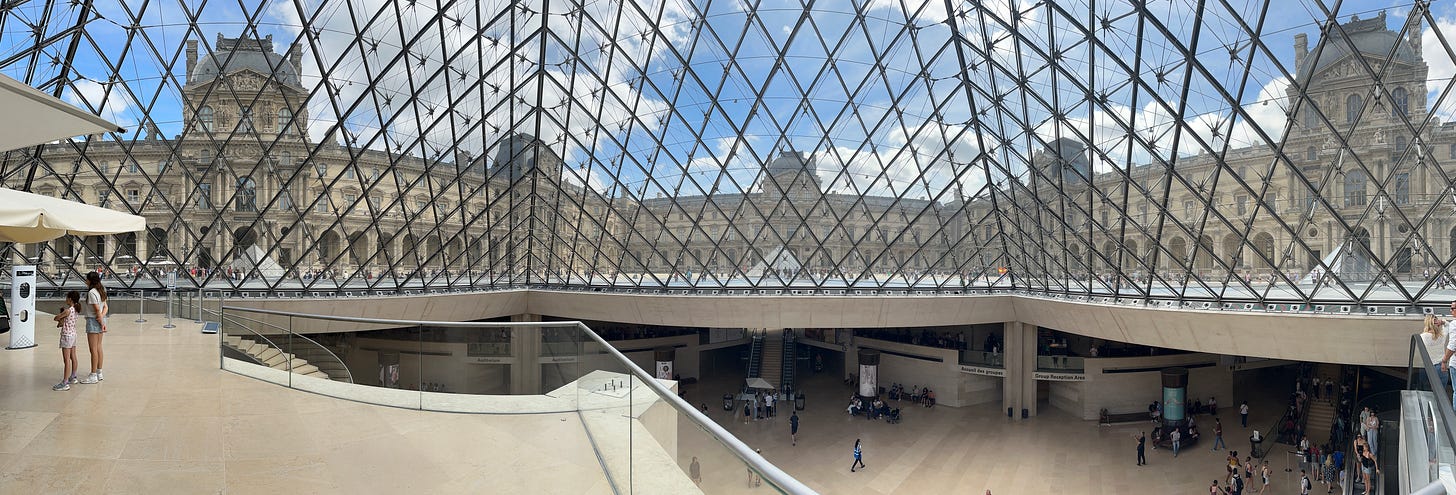
May we use our talents in ways that we’d be proud to have displayed, even centuries from now





